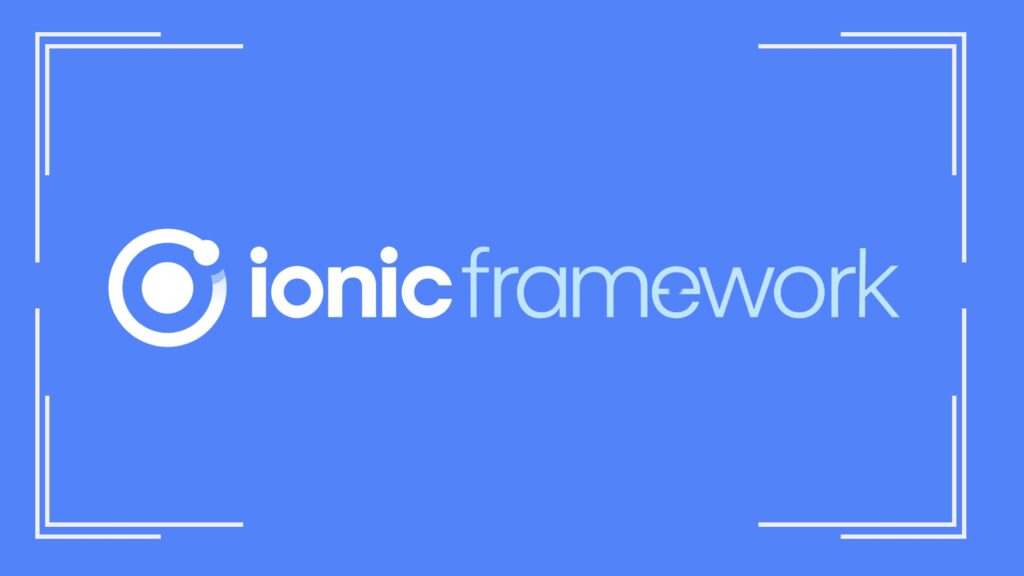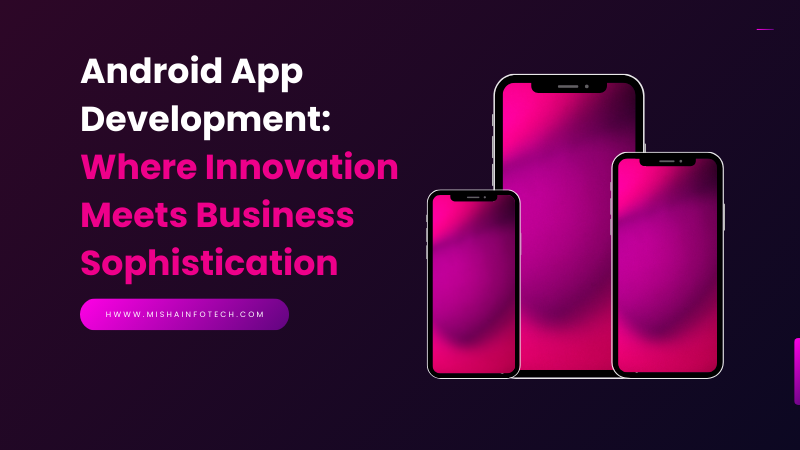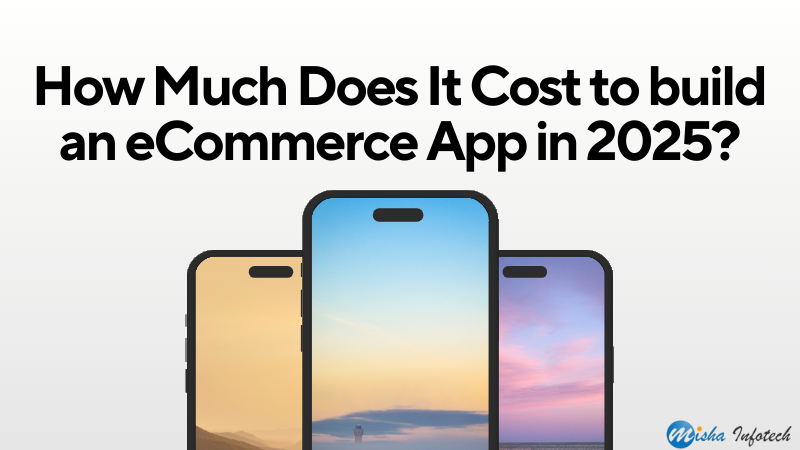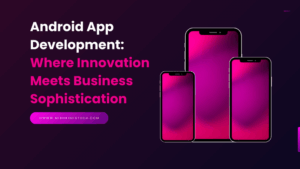In today’s fast-paced digital landscape, businesses and developers are constantly seeking efficient, scalable, and cost-effective solutions for building mobile and web applications. Among the plethora of technologies available, the Ionic App Framework stands out as a robust and versatile choice, especially for creating high-quality cross-platform applications. Its seamless integration with popular web technologies and compatibility with diverse platforms make it a game-changer in the app development world.
In this blog, we’ll explore what makes the Ionic App Framework so popular, how it benefits developers, and why it is an excellent choice for modern app development.
What is the Ionic App Framework?
The Ionic App Framework is an open-source UI toolkit for building performant, high-quality applications for mobile, desktop, and Progressive Web Apps (PWAs). Built on top of HTML, CSS, and JavaScript, Ionic leverages popular web frameworks like Angular, React, and Vue, allowing developers to create applications with a native look and feel.
Ionic provides a library of pre-designed UI components, tools, and native plugins, enabling developers to seamlessly integrate device features such as camera, GPS, and push notifications into their apps.
Why Choose the Ionic App Framework?
- Cross-Platform Compatibility: One of the standout features of Ionic is its ability to create applications that work seamlessly across multiple platforms, including iOS, Android, and the web. Developers can write a single codebase, significantly reducing development time and costs.
- Built for PWAs: Progressive Web Apps (PWAs) are becoming increasingly popular due to their ability to combine the best of web and mobile apps. The Ionic App Framework is designed with PWA development in mind, offering tools and support for building lightweight, fast, and responsive applications.
- Pre-Built UI Components: Ionic has a rich library of pre-designed UI components, such as buttons, forms, tabs, and models. These components are optimized for mobile devices and ensure a consistent user experience across platforms.
- Integration with Popular Frameworks: Ionic works seamlessly with Angular, React, and Vue frameworks. This flexibility allows developers to use their preferred tools and frameworks while leveraging Ionic’s powerful features.
- Native-Like Performance: Ionic applications are powered by Capacitor, a native runtime that enables web applications to access native device features. This ensures that Ionic apps deliver performance and functionality comparable to native apps.
How the Ionic App Framework Revolutionizes Development
- Streamlined Development Process: Ionic’s single codebase approach eliminates the need for separate development teams for iOS and Android. This unified workflow reduces development time and minimizes maintenance efforts.
- Cost-Effective Solutions: By enabling developers to build cross-platform apps from a single codebase, Ionic significantly cuts down on development and maintenance costs, making it an ideal choice for startups and small businesses.
- Enhanced User Experience: Ionic provides developers with tools to create visually appealing and user-friendly applications. With its focus on responsive design and native-like components, Ionic ensures a seamless experience for users across devices.
- Access to Native Device Features: Through Capacitor or Cordova, Ionic allows developers to access native device functionalities such as the camera, GPS, and file system, enabling them to build feature-rich applications.
- Future-Proof Technology: Ionic’s continuous updates and active community support ensure that developers always have access to the latest tools and technologies, keeping their applications relevant and up-to-date.
Use Cases of Ionic App Framework
The versatility of the Ionic App Framework makes it suitable for a wide range of applications. Here are some examples:
- E-Commerce Apps: Ionic is perfect for creating e-commerce apps due to its responsive design and ability to handle complex functionalities like user authentication, payment gateways, and product catalogues.
- Healthcare Apps: Ionic’s ability to integrate with native device features makes it an excellent choice for healthcare apps, which often require functionalities like GPS tracking, notifications, and secure data handling.
- Educational Platforms: With its robust UI components and cross-platform capabilities, Ionic is ideal for building educational platforms that deliver a seamless learning experience across devices.
- Social Media Apps: Ionic’s focus on performance and scalability makes it a great option for developing social media apps that require real-time updates and engaging user interfaces.
- Progressive Web Apps: Thanks to its built-in support for PWAs, Ionic enables developers to create apps that combine the best features of web and mobile applications.
Key Features of the Ionic App Framework
- Capacitor Integration: Capacitor is Ionic’s cross-platform native runtime, enabling web apps to run natively on iOS, Android, and desktop. It provides a modern alternative to Cordova and comes with a library of plugins for accessing native device features.
- Rich UI Toolkit: Ionic’s comprehensive library of UI components allows developers to create apps with a consistent and polished look, reducing the need for custom design work.
- Powerful CLI: The Ionic Command Line Interface (CLI) is a powerful tool that simplifies app development by providing commands for creating, building, and deploying apps.
- Live Reload: Ionic’s live reload feature allows developers to see changes in real time, speeding up the development process and reducing debugging time.
- Native Plugins: Ionic’s extensive library of native plugins enables developers to integrate advanced functionalities into their apps, such as biometric authentication, augmented reality, and advanced analytics.
Comparison with Other Frameworks
While each framework has its strengths, Ionic’s focus on web technologies and PWA support makes it a standout choice for developers looking to build versatile applications.
| Feature | Ionic | React Native | Flutter |
| Language Used | HTML, CSS, JS | JavaScript | Dart |
| Cross-Platform Support | Excellent | Excellent | Excellent |
| Learning Curve | Easy | Moderate | Steep |
| PWA Support | Strong | Limited | Limited |
| Pre-Built Components | Rich Library | Requires Third-Party | Limited |
| Community Support | Extensive | Extensive | Growing |
Best Practices for Using the Ionic App Framework
- Optimize for Performance: While Ionic apps offer native-like performance, developers should optimize their code and minimize dependencies to ensure a smooth user experience.
- Leverage Capacitor Plugins: Capacitor’s native plugins can significantly enhance the functionality of Ionic apps. Developers should explore these plugins to unlock advanced capabilities.
- Focus on Responsive Design: Given Ionic’s cross-platform nature, it’s crucial to ensure that the app design is responsive and works well on devices of all sizes.
- Use Lazy Loading: To improve app performance, implement lazy loading for modules and components, ensuring that resources are loaded only when needed.
- Stay Updated: Ionic is an evolving framework with frequent updates. Developers should stay informed about the latest features and best practices to make the most of the framework.
Future of the Ionic App Framework
As technology continues to evolve, the Ionic App Framework is well-positioned to remain a leader in cross-platform app development. With its focus on PWAs, seamless integration with modern web technologies, and active community support, Ionic is set to play a key role in shaping the future of app development.
Key areas to watch include:
- Enhanced PWA capabilities for offline access and better performance.
- Integration with emerging technologies like AI, AR/VR, and IoT.
- Improved developer tools for faster and more efficient app development.
Why Automate Ionicon Usage in Angular?
Manually importing and managing icons in Angular apps can lead to:
- Repetitive Tasks: Repeated imports and declarations across multiple components.
- Inconsistencies: Errors in naming or missing imports.
- Scalability Issues: Difficulty maintaining a growing icon set in large applications.
Automating Ionicon usage ensures consistency, reduces boilerplate code, and allows developers to focus on core features rather than repetitive tasks.
Conclusion
The Ionic App Framework has revolutionized the way developers approach app development. Its versatility, cost-effectiveness, and ability to create high-quality cross-platform applications make it an invaluable tool for businesses and developers alike.
Whether you’re a startup looking to build your first app or an enterprise aiming to expand your digital presence, Ionic offers the perfect blend of functionality and flexibility to meet your needs.
With its focus on innovation and user experience, the Ionic App Framework is not just a tool but a gateway to creating the next generation of applications. So, if you’re ready to embark on your app development journey, Ionic might just be the perfect companion.
Are you considering the Ionic App Framework for your next project? Share your thoughts and experiences in the comments below!














